Return GUN SHOW main menu Multiple Choice Aritists
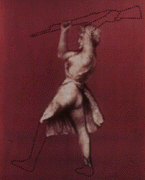
Whatever views one has about guns, they are a decisive factor in historical
and contemporary America. In hopes of assuring safety from crime, nearly
seventy million Americans purchase guns. Others refuse to buy a gun fearing
that that it will more likely be used against a family member. The passionatep;and
often equally validp;personal testimonies offered by those both for
and against gun control can lend a crusade-like quality to public debate.
And the posturing of the gun and gun control lobbies, each armed with volumes
of statistical data, does little to assist Americans in making informed
decisions about this important issue.
Despite this situation, discussion and debate must continue regarding the
appropriate role of guns in society. Addressing complex and potentially
unresolvable issues, while hazardous to political interests, might expedite
understanding and reconciliation. It is for this reason that UCR/CMP has
produced In Our Sights: Artists Look at Guns. This exhibition
follows a long tradition of CMP projects that use the eyes and visions of
artists as a catalyst for larger community dialog. In Our Sights attempts
to minimize one-sided rhetoric through the inclusion of a wide range of
personal viewpoints and a consideration of issues such as the consequences
of gun ownership, individual rights, the relationship between guns and violence,
victims of gun violence and the gun as an icon and symbol.
Following are some of the artists featured in the exhibition:
Stephanie Cress survived gunshot wounds from a 1993 robbery; her
husband did not. Works like "The Lone Ranger" and "Murder
with Intent..." are part of Cress' process of coping with this grevious
experience. Large scale evidence photographs of Cress' wounds serve as a
point of departure for the rest of her work which reaffirms the overt and
subliminal powers that are the symbolic core of the gun. Rather than condemning
her aggressor, Cress explores sexuality, violence and murder.

Bradley McCallum's "Shroud: Mothers' Voices" is a compelling
work in memory of gunshot victims from New Haven, Connecticut. In a gallery
of suspended shrouds, the background voices are from the mothers, whose
words describe the circumstances of their children's death. This memorial
is a new and powerful standard in the realm of public art.
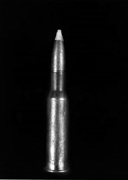 Anthony
Aziz's still life images of bullets from many different nations act
as a metaphor for
Anthony
Aziz's still life images of bullets from many different nations act
as a metaphor for
nationalism and cultural boundaries. Thomas Bayard's close-up photographs
of a disassembled M14 machine gun recall Paul Strand's early modernist photographs
of Ackley movie cameras and similarly revel in the beauty of an object whose
purpose is obscured and rendered unimportant by the elegance of its machinery.
Dale Kistemaker investigates his own male mythology through a photographic
study of toy guns as elements of his childhood development.
Lynn Marsh photographs several women in her studio who are not gun
owners. Holding guns for what might be the first time, they playfully adopt
fantasies and assume roles which they imagine match those of gun owners.
Joan Barker's images of gun owners utilize the vocabulary of photographic
portraiture. Studied and beautiful, the 8" x 10" contact prints
ordain their subjects with an elegance and privilege bestowed by the language
of formal poses.
Cynthia Rettig Pancher examines the naturalism of guns in her own
family. The photos and accompanying diary-style text recall the recreational
shooting that was part of her family outings. The portrayal is one of intimacy
and subtle fear rather than violence. Cynthia Stahl similarly considers
the non-violence of guns present in her childhood home. In her video presentation,
she constructs a mock confessional voice to whisper to the viewer that her
square-dance-loving parents are also members of the NRA, gently poking fun
at stereotypical depictions of gun owners.

One of the strongest coalitions in the movement to ease the regulation
of concealed weapons licensing are women's groups. Nancy Floyd examines
the emergence of women as gun owners, eliciting a multifaceted commentary
on how these women feel about their right to own
guns. Their feelings-both positive and negative-reveal a reaction to
societal indifference to the threat of violence again women and the sense
of empowerment that is part of their decision to arm themselves.
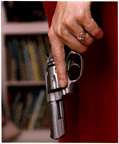
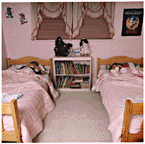

In his work, titled "Drive-By Shootings", Andy Anderson documents gun-related violence from his moving car. While videotaping various houses and streets, he reads police reports that detail the violent crimes committed in those neighborhoods. His deadpan narration and distant style chillingly portray how violence has been incorporated into people's daily lives.
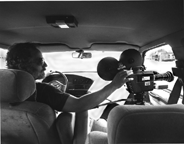
Joseph Rodriguez's penetrating photographic review of East
Los Angeles gangs has recently been previewed by the International Center
for Photography and is soon to be published in book form.
Return GUN SHOW main menu Multiple Choice Aritists
